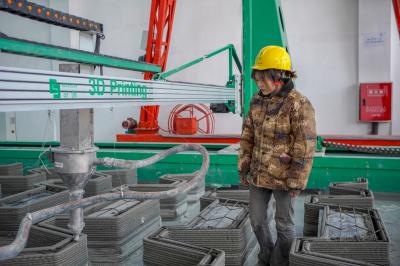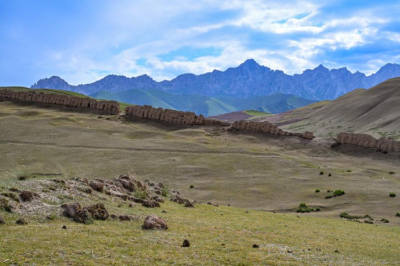Senior citizens' cultural lives are being much enriched. By the end of 2015, there were 763,00 schools for the elderly across the country, 180 national-level and over 500 provincial-level community education pilot zones and demonstration zones, with the elderly accounting for over 60 percent of all participants in community education. There were 24 newspapers and 24 periodicals specially for the aged. The state provided a variety of digital cultural resources suitable for the elderly through various channels including the National Cultural Information Resources Sharing Project, the National Digital Culture Network and Chinese Culture Network TV.
(5) Rights of people with disabilities
The system on the protection of rights and interests of people with disabilities has been constantly improved. Since August 2012, the State Council successively formulated the Regulations on the Construction of a Barrier-free Environment and the Opinions on Accelerating the Development of a Well-off Course for People with Disabilities. The Supreme People's Procuratorate and the China Federation of the Disabled jointly distributed the Opinions on Effectively Protecting the Disabled Persons' Lawful Rights and Interests in Procuratorial Work. The state has established and improved mechanisms for the provision of legal assistance to the disabled, offering free, timely and convenient legal services for them.
People with disabilities are covered by social security. By 2015, the state had established a living subsidy system for the financially-challenged disabled population and nursing care allowances for the severely disabled across the country. There were 10.884 million people with disabilities in both urban and rural areas receiving minimum subsistence allowances, nearly 22.3 million people with disabilities in both urban and rural areas participating in social endowment insurance schemes and 3.023 million urban disabled dwellers participating in basic medical insurance schemes. During the period of 2012-2015, 4.962 million impoverished people with disabilities in rural areas were lifted out of poverty and 3.17 million poor disabled residents in rural areas received skills training, with the planned targets achieved in advance. The central government allocated a total of 3.74 billion yuan in rehabilitation and poverty-relief interest-deducted loans to support 743,000 impoverished disabled people. The state subsidized the renovation of dilapidated houses of 1.164 million rural households with disabled members.
The rehabilitation service for people with disabilities is being continuously enhanced. By the end of 2015, a total of 222,000 communities had established rehabilitation stations across the country. From 2012 to 2015, 8.544 million people with disabilities received community rehabilitation services. 12.466 million received basic rehabilitation services, achieving the expected goal ahead of schedule. From 2011 to 2015, the central government appropriated 432 million yuan to support rehabilitation training for 36,000 autistic children living in poverty. The supporting devices network covering both urban and rural areas is gradually being improved, offering 6.655 million supporting devices of various types. |
- Home
- News |Tibet |Exclusive |China |World |Related News |Latest
- Documents |White Papers |Others
- Photo |Politics |Economy & Society |Culture & Religion |Human & Nature |Beautiful Tibet |Other Tibetan-Inhabited Area |Exchanges |Related
- Video |News |Documentary |Micro-Video |Entertainment
- Art
- Tourism
- In Focus
- About Tibet






